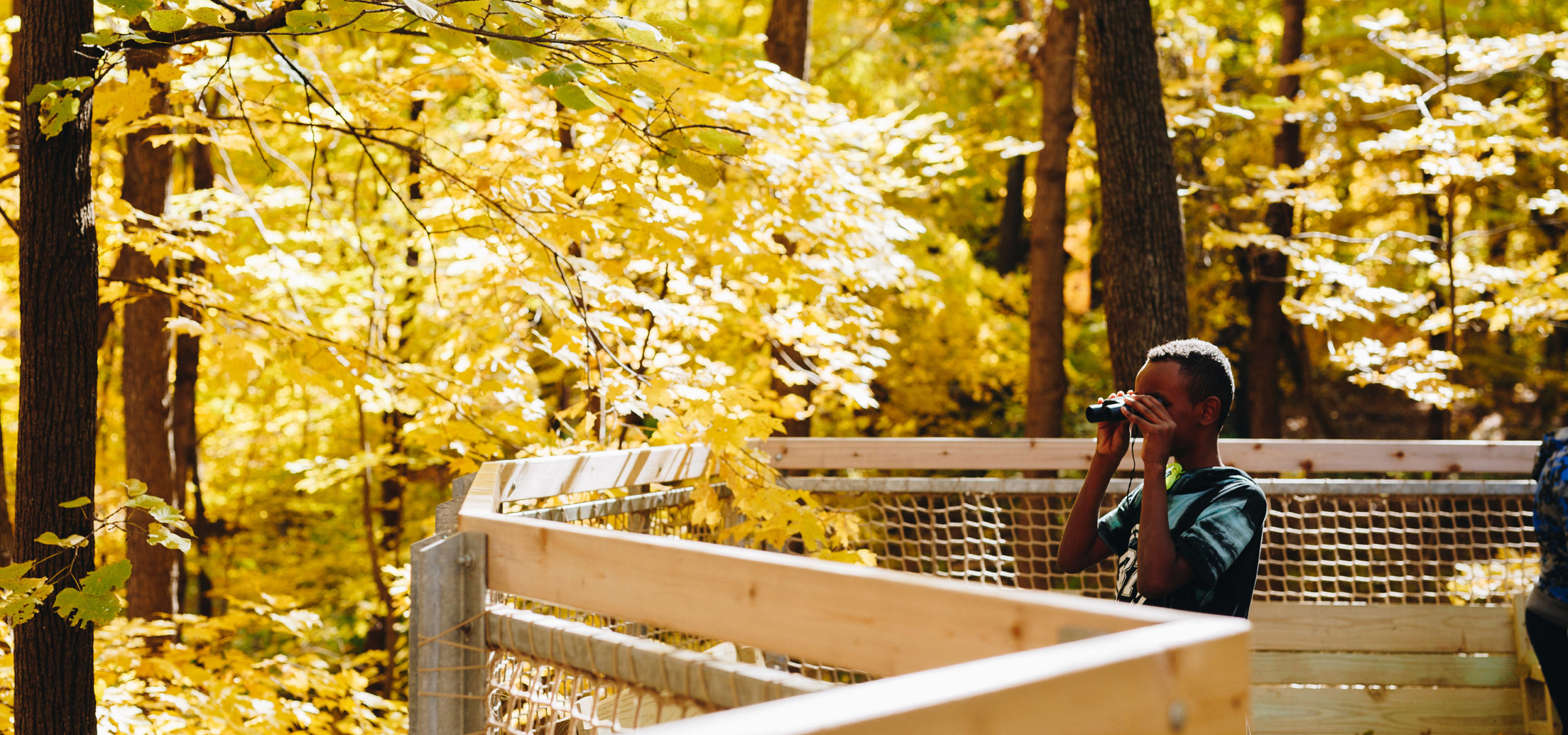As we adjust to living without going into schools, we know that many families are now in the difficult and unfamiliar position of homeschooling and supporting e-learning for their kids. That’s why, over the next few weeks, we’ll be turning our blog and social media platforms into a resource for youth (and adults!) interested in learning about nature and the outdoors.
We’ve worked with our team of naturalists to customize the nature-based curriculum we usually bring to programs, so that anyone can follow along at home. Over the next few weeks, we’ll be sharing 2-3 lesson plans, activities, or educational resources per week. Today, we’re sharing a mindfulness exercise we practice with youth in Camp Fire Minnesota and Tanadoona programs.
What Is Mindfulness?
Bringing attention to the experiences occurring in the present moment in a gentle and non-judgmental way. 
Activity (40-45 minutes)
Introduction (10-15 minutes)
- Ask everyone how they’re feeling today. Ask if they’ve ever felt so angry, sad, anxious, or upset that they feel like they can’t control themselves.
- Ask what are some things that we can do to calm down when we feel overwhelmed. How can we soothe ourselves?
- One of the ways that we can help ourselves before we get into the place of feeling overwhelmed is called mindfulness. What is mindfulness?
- It’s a practice that requires us to be present in the moment.
- Mindfulness makes us more resilient, thoughtful, calm, and open to growth.
- To help practice mindfulness, we’ll take part in 3 activities: a nature walk, a short breathing exercise, and an art activity.

Nature Walk (20-25 minutes)
- One great way to practice mindfulness is to spend time in nature. Go for a walk or wander around your yard. As of today (Friday, March 20), most Minnesota state parks are still open to the public. Please practice social distancing rules by maintaining 6ft of space between yourself and other people. Depending on the space that is available, your walk may take less time.
- While you’re on your walk, allow some time to pause and say things you notice. Here are some things to focus on while you’re walking:
- How the wind feels on your skin.
- How the sun warms you up when you stand in it.
- What noises do you hear?
- Look up and around you. Can you see or hear any birds or other animals?
- End your walk at home or in an open space for playtime. Ask your youth how they can incorporate mindfulness into their playtime. Spend 10-15 minutes of free, active playtime.
- Once inside, gather together in a sitting area.
Short Breathing Exercise (5 mins)
- As a group, practice breathing like balloons:
- Take a deep breath in through your nose, and then blow it out of your mouth like a balloon. Close your eyes and picture a balloon if it helps. Do this several times.
Art Activity (20 mins)
- Art promotes focus, creativity and curiosity – all important components of mindfulness. Allow youth to free draw for 20 minutes. If they are having trouble coming up with ideas, ask them to think back to what they saw, heard, or felt on their walk. Coloring sheets are also a great tool to have on hand, as are collage materials for youth who get anxious about their drawing abilities.
- Our minds often wander while making art. That is O.K. Gently return your focus to your art-making.

Questions
At the end of the lesson, ask everyone what they learned today. How can they take what they’ve learned today into their lives?
Additional Information and Resources
https://www.nytimes.com/guides/well/mindfulness-for-children



